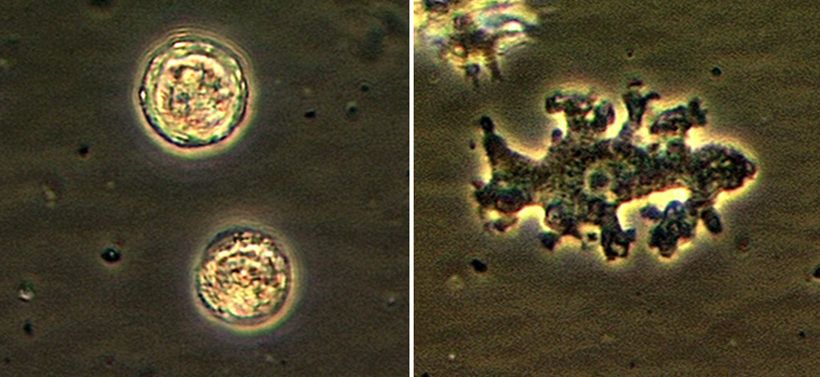A woman was killed by a rare brain-eating amoeba that likely entered her brain after being injected into her nasal cavity when she used a neti pot, researchers said in a new report.
Neti pots look like small teapots and are used to help clean out sinuses by pouring water into the nose while the person tilts his or her head back.
The amoeba, Balamuthia mandrillaris, is found in soil and fresh water. It was discovered in 1986 in a monkey brain during an autopsy. Since then, there have been about 200 human cases worldwide and at least 70 in the United States.
The victim, a 69-year-old female, developed a chronic sinus infection and prescribed medication failed to provide her relief, according to a study published in the International Journal of Infectious Diseases that examined the case. Her doctor then suggested she use saline irrigation to clear the sinuses.
But the woman instead used tap water, which contained the amoeba, filtered through a Brita filter and injected through a neti pot. She went to the doctor several times over the next year with a prominent nasal sore and was thought to have glioma, a tumor.
She continued to deteriorate in the days after a procedure on the sore and doctors finally thought of the possibility of amoebic infection on day 19. An evaluation revealed clear evidence of an amoebic infection. A novel treatment from the federal CDC health agency was delivered but within one week, she was dead.
The researchers said they suspect the amoeba was delivered through “improper nasal irrigation,” noting that it’s been reported as a method of infection for another amoeba, the notorious N. fowleri.
“This is the first case of Balamuthia mandrillaris brain infection suspected from nasal lavage,” the researchers noted. “We suggest amoeba testing in cases of a nasal sore and ring-enhancing brain lesion.”

Doctor Says More Cases Coming
Cynthia Maree, an infectious-disease doctor at Swedish Medical Center in Seattle, where the woman was treated, and who co-authored the case study, said she believes there will be a lot more amoeba infections coming.
“I think we are going to see a lot more infections that we see south (move) north, as we have a warming of our environment,” Maree told the Seattle Times. “Considering the mortality associated with this infection, my hope was that I was wrong. But my fear was that I was right.”
Previously, the amoebas were common in South and Central America. California, Texas, and Arizona have seen 10 or more cases between 1974 and 2016 while 23 other states have seen at least one case during that time period.
In comparison with the two other types of amoebas that cause fatal brain infections, Balamuthia takes much longer to kill. N. fowleri, for instance, killed a New Jersey man in just a few days earlier this year. He was thought to have contracted the amoeba on Sept. 16. By Sept. 21, he had died in a hospital.
The fatality rate for the amoebas is close to 100 percent. For instance, only four people are known to have survived fowleri in the United States since it was discovered.


